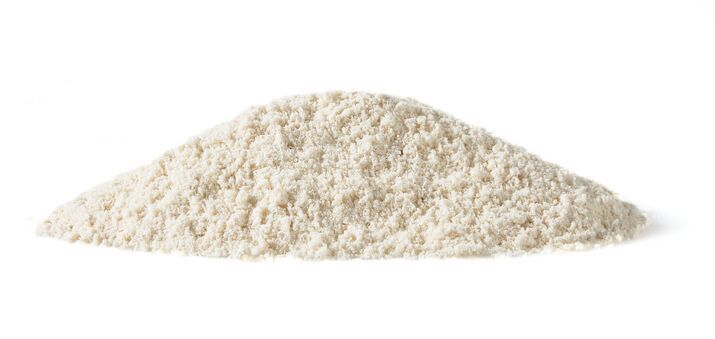Responsibly reducing dairy-based raw materials in piglet feeds
Given the current conditions in the dairy market with huge price increases and limited availability, it is worthwhile to critically review the use of dairy products in piglet feeds and during the piglet rearing period. Replacing dairy products requires a balanced approach. In this article, we explain when and how dairy products can be partially or fully replaced in a responsible way.

Whether or not this is possible depends on the reason for using dairy as a protein source:
- Source of lactose
- High-quality protein source
- Flavoring
Reducing lactose
Lactose performs two important functions in young piglets:
- It feeds the lactic acid bacteria in the stomach, which acidifies the stomach’s contents. This is especially important as long as the production of hydrochloric acid is not yet well developed.
- Lactose is broken down by the enzyme lactase enzyme and thus functions as an energy source, which is especially important for very young weaned piglets and piglets with low feed intake.
Partially or fully replacing lactose?
- Piglets that are well prepared for the weaning process, that have already learned to eat and digest plant-based raw materials (incl starch and protein), require less lactose. This includes a > 3.5-week suckling period, sufficient feed intake (400 - 800 grams in 28 days) and sufficient weaning weight (> 210 grams of growth/day during the farrowing period).
- Piglets with sufficient feed intake after weaning require less lactose (min 135 grams starting from day 1 and increasing).
- Piglets with very high feed intake (> 165 grams on day 1 after weaning) can even perform better without lactose. In case of very high feed intake after weaning, too much lactose can have a negative effect on the animal’s performance.
Replacing lactose
Quick resorbable energy, for example in the form of sugar, can replace the energy function of lactose. See the text below for more information about the impact this has on taste. A piglet’s hydrochloric acid production can be supported by reducing the feed’s buffer capacity and using acids that affect the stomach’s pH.
When is replacing dairy products as a source of protein an option?
- Piglets that are well prepared for the weaning process, that have already learned to eat and digest plant-based raw materials (incl starch and protein – also see the paragraph on ‘Lactose’), are much better able to handle plant-based proteins, which makes it possible to significantly reduce the cost associated with the use of dairy.
- Researching the actual quality of the dairy product, gives you the right knowledge for selecting substitute raw materials.
- Low CP content by means of the quality of substitute protein raw materials and by making use of a broader pallet of synthetic amino acids help make feeds easier to digest, while still achieving an appropriate amino acid pattern.
- Better and more robust digestion by means of specific raw materials that stimulate and standardise gastrointestinal activity. This provides for better and safer digestion. The exact type of raw material is highly dependent on the piglet’s eating and intake pattern. This is a topic all by itself, which we are happy to discuss with you personally.
Dairy products used as a flavoring
It is easy to replace dairy products purely used as flavorings for piglets older than 21 days. However, this is not a one-on-one substitute. The feed’s taste is not only influenced by the raw materials, but, for example, also by:
- Fats, which have a major influence on taste. The type of fat, the degree of oxidation and the product’s degree of purity.
- Special raw materials, such as oat flakes and rice, significantly influence taste. Furthermore, commonly used raw materials, such as wheat and barley, affect feed intake in different ways; see the table below.
- The treatment of raw materials, such as thoroughly cleaning cereals, provides for uniform taste and higher feed intake.
- Products such as sugar, sweeteners, and flavorings enhance the taste and level off variations in taste. Keep in mind that these types of products can also have negative effects, for example on microbiotics and uniformity of intake during the day.
- The production method also has a big influence. For example the effect of soft pellets that are easier to eat and digest.

How to save on piglet milk
To be able to effectively answer this question you must first know why the milk is needed and what the conditions are.
Why is the milk needed?
- To be able to fully replace the sow’s milk from day 3-4? Because the sow has more piglets than it is able to keep alive?
- As a supplement to sow’s milk? While the piglets receive sufficient milk from the sow to stay alive, the extra milk is needed to enable the piglets to grow sufficiently.
What are the conditions?
- Are the piglets in the farrowing pen susceptible to diarrhea?
- Are there special requirements in terms of how the milk is administered?
- How many resources are available to administer the milk?

Reducing costs by switching at the right time
We recommend that milk be fed up to a minimum daily intake of 20 grams per piglet per day. Switching before this results in too many piglets that subsequently stop eating. Intake during the first 14 days should be around 100-150 grams per piglet. Deviating intakes must be analysed. Clear norms relating to switching moments and the duration of use help advisors provide the proper advice.
Dry milk (that can also be fed in liquid form)
Dry milk can be provided as a supplement to sow’s milk. This is a simple and highly effective way of administering milk from day 2-3. (can also be administered in liquid form).
The “dry” milk also can be used in all automated liquid feeding systems and beside sow milk from day 2-3 and completely substitude sow milk from day 7.
Want to know more?




